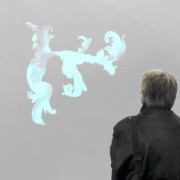Expertise
Culture Focus: Museums
A holistic research approach to mediating life and art reality and interests in a museum context
Museums today find themselves in the need to change, to open up for and to integrate current social cultural themes, conflicts and developments and to open up a space for their audience to experience their own life reality, their life interests and challenges with those of the museum and mediated by the exhibits.
This makes museum and exhibition practice directly interrelated with audience reception and impact processes and structures. Both are embedded in the larger context of what we call “impact unit” which are co-determined by the current cultural societal dynamics and issues.
To create relevance in terms of psychology means to enable visitors to experience the museum as a holistic impact room as a sheltered and open room to mediate their life interests with the interests of art and to experience relevant, dramatic and lively situation. Art can mediate life issues, conflicts and solution strategies – if the audience manages to enter an extensive reception process.
Audience research from a psychology approach at its core is reception- and impact-driven research. It looks at the process of what people go through and how they go about e.g. a specific museum and exhibition.
Working from reception means to put the process, the experience and the impact into the center.
Reception is a dynamic consciously and unconsciously happening dialogue process that people go through all the time in daily life and daily life culture.
A psychology approach allows for including the larger ensemble of factors present at the location co-impacting the exhibits to be part of the experience and impact evaluation. This is especially the architecture and room layout-driven atmosphere, the social interaction style, the exhibition format and individual design and the presentation of the exhibits and so on.
Psychology understands the dynamics of the overall reception process while being present, the journey visitors make and in a second step analyses the empirical material along the psycho-morphological theory.
With artwork and other exhibits however, often the frame of reference or the “how to” is not learned, they exceed practical functionality, fun or established story patterns. Our findings show it’s much less disinterest that make people quickly walk by the many exhibits, but a lack of tools to select, approach and manage the offer.
Because of this tying back to today’s societal and daily-life cultural practices, themes and “narratives” of sense-making is becoming a critical issues of museum involvement. The question is how the contemporary societal image cultures relate to and integrate to the museums’ image cultures.
Morphology is the system for showing how impact and insight processes work – for museum audiences and makers
Despite the everyday life inflation of image production and communication usage, audiences still find it hard to access artwork by means of a reception-driven experience journey. They often find it hard verbalize what and why they experience something, how and why they act or behave the way they do.
Modern methods such as tracking, beacons, etc. facilitate to follow them around and to discover their paths through the rooms. To assess, analyze and conclude these „experience journeys“, their patterns, drivers and motivations takes an appropriate in-depth theory and matching methodic procedures. Morphology with the guiding principles such as „logic of Gestalt“ and their metamorphosis, art-oriented multi-layered in-depth perspectives of our reality is an approach par excellence to research the complexity of the issues of cultural contexts, exhibition format and the single exhibit, in particular a work of art.
Qualitative interviewing is not asking people “why”. It makes them tell about whatever comes to their mind within the process and deriving from there taking them through steps of rigorous methodical exploration, e.g. like the impact tension factors and analytical versions part of the Morphological system. It takes experience and a connoisseurship in how e.g. works of arts, images can start up dramatic life-like and personally relevant experiences and how to access these art-inherent impact cores through your own perception experience.
Example: Multi Media Reception Impact
Perception formats allowing to go through a process – such as moving images, performances, etc. – depending on their specific topic and setting can facilitate the experience journey of a contemporary audience.
Exhibitions such as Julian Rosefeld’s Manifesto at the Hamburger Bahnhof in 2016 or Pipilotti Rist 2016 retrospective at the Zuricher Kunsthaus are examples of overcoming the dilemma of an under-involved audience.
Example: Audio Guides
Audio guides have become important popular “guides” to the exhibits. Mostly based on art historic details they provide information and little stories to select pieces.
In perspective to a reception-process and theme-driven audience approach we can empirically research and co-develop innovative guide formats e.g. along the unfolding of a dramatic experience journey along selected exhibits. As a next step these exhibits could also be super-curated along the synergies of relevant contemporary cultural topics such as the “ungearing” culture practice and commitment, general psychological themes such as freedom and responsibility reflecting back to the individual life, and so on.
Public Perception Services
- Empirical qualitative reception insight studies with relevant stakeholder groups: museum makers, curators, visitors, etc.
- Holistic experience processes and themes of specific museums – from image, location, architecture, room structure, overall atmosphere, social interaction, exhibition paths to single exhibit or artwork experience.
- Evaluation of visitor experience and impact to specific presentation formats.
- Evaluation of existing and development of meaning-driven image routes along theme-specific exhibition formats.
- Artwork Experience Journeys: Guided psychology-based experience processes with visitors (individuals, groups, school classes, etc.).
- Evaluation of the impact of digital device usage and consulting on reception-based digital concepts.
- Audio guide evaluation and psychology-based artwork and theme tour consulting and development.


